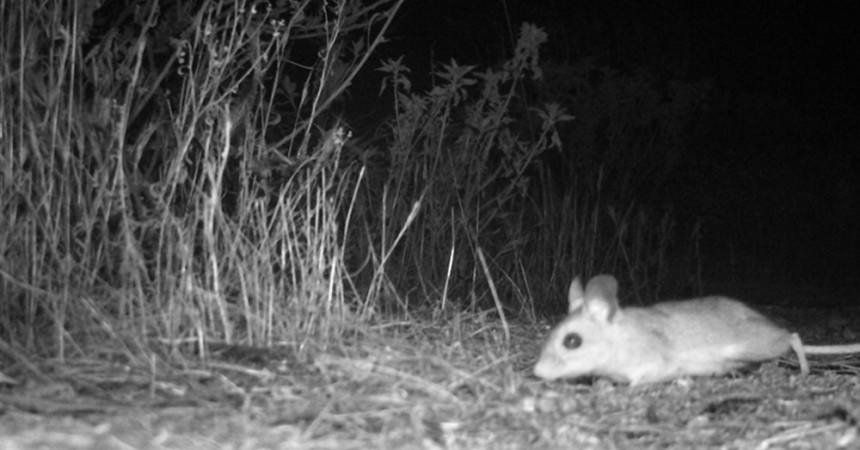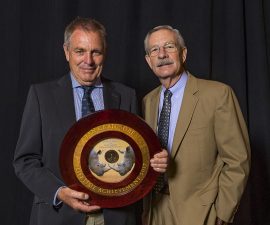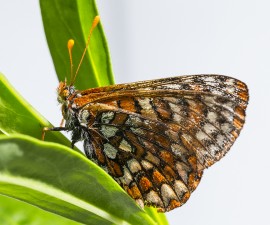My favorite part of the fieldwork I do (see: A Night with the Pocket Mouse Field Crew) is watching the pocket mice, kangaroo rats, and other small mammals in the wild. I love releasing them from a trap and watching them take a sand bath, or dig up a cache of seeds they buried previously, or sometimes dive into the closest burrow and get chased right back out by its owner who was already inside.
While the reward (and often the data!) of an animal behavior study is observing your subject do what it does, figuring out how to make the observation can be one of the biggest challenges. You don’t want your presence to affect what the animal is doing—unless you are observing their response to humans.
With big animals that live in fairly open environments, sometimes you just need to be far enough away. As an undergraduate I worked as a field assistant on a pronghorn project in Montana. We hiked up hillsides and watched for females to get their babies out of hiding to nurse. We used binoculars and spotting scopes so we could see well enough to note ear tag colors, yet distant enough to not make the animals feel threatened by our presence.
With the pocket mice, that are so small, quick and nocturnal, getting far away and sitting quietly doesn’t work very well. I spent a dozen or so nights trying, outfitted with a camp chair and night-vision goggles. I set out some seeds on a tray and hoped the pocket mice would come. With one exception, they did not. Those were some of the longest nights I have ever experienced, sitting in the dark, staring at nothing.

Andrea Sork, a field assistant, uses night vision goggles to observe a kangaroo rat. On the right is an infrared camcorder.
What ended up working was trapping them first and then putting the tiny rodents inside a clear arena with the seeds, so I could watch them through the sides. While it isn’t perfect—they spend time exploring the walls and digging to get out—it at least allowed me to see them! And most of the animals decided that the seeds inside the arena were worth taking; even though I was sitting 12 feet away, the mice made multiple trips to the seed pile and back to their burrow. It helped that I sat very still and quiet the whole time. But it was exciting watching the animals come and go!
In addition to physically watching the pocket mice, camera traps can be hugely important. You can set multiple cameras at once and leave them for many nights. Later, as you go through the photos and videos, you can see where the mice were and what they were doing—especially if you leave food trays or set them at burrow entrances or some other specific place. The upside is that you can have a lot more “eyes” out at once, and cameras are less intrusive than a person sitting there. The downside, though, is that you can’t be sure cameras are catching everything, and they often have a pretty narrow view.
If you get a chance to see some animals in the wild, take an extra moment to watch them do their thing. Normal activities like sleeping or eating are a feat to witness, and there is so much to learn just by sitting still and watching!
Rachel Chock is a graduate student and volunteer with San Diego Zoo Institute for Conservation Research’s Pacific pocket mouse project. Read her previous post, Protected Habitat in Southern California.





